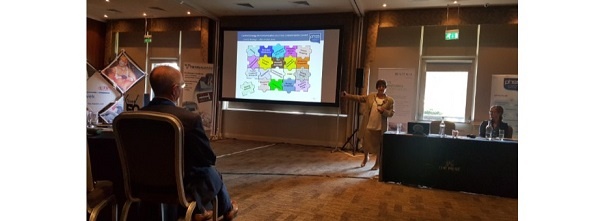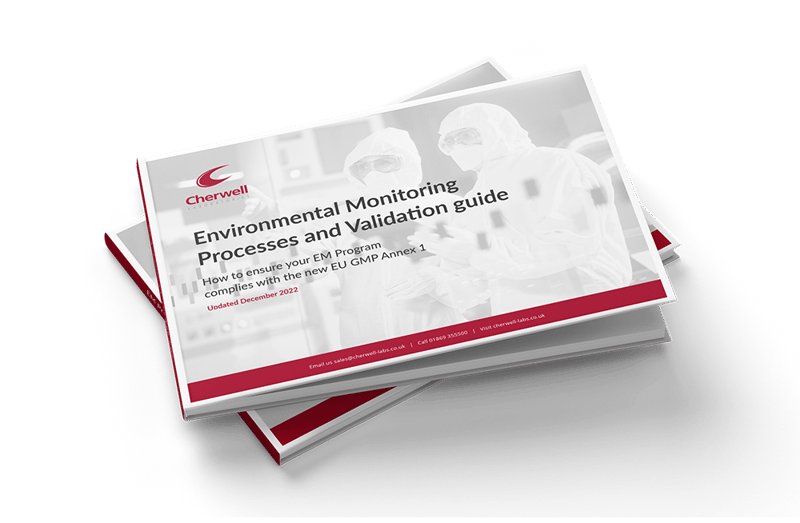
It is always a pleasure to attend the PHSS steriles meeting as there are always many fascinating topics being presented and discussed. This year had an excellent selection of talks about the latest trends and discussion points in the manufacture of sterile drugs. Sales Manager, Andrew Barrow and I attended on behalf of Cherwell Laboratories. The event was held on the 7th June, at The Mere Hotel & Spa in Knutsford for the second consecutive year.
Annex 1 Update
As you know, the EMA are currently wading through the 6,000 comments submitted after the publication of the draft copy of EU GMP Annex 1. Although he wasn’t there in person, Andrew Hopkins of the MHRA, gave feedback to the PHSS via email through a list of questions. Key points started with that there may be a second public consultation if major changes are made. Some of the GMP inspectors in the EMA are interpreting the new document in different ways regarding the application of Quality Risk Management (QRM). Some are taking it literally, saying it should only apply to sections where QRM is mentioned, some believe QRM applies to the entire document.
From an environmental monitoring perspective, the section that states EM requires re-qualification every 6 months requires re-wording. If you have 6 months’ worth of data, why re-qualify? Also, there should be a barrier between Controlled Not Classified areas (CNC) and grade D. There was also lengthy discussion about a blog Hopkins wrote for the MHRA website about VHP. It despairs at the lack of shared knowledge about this technology and further training is required so operators understand the limitations.
Di Morris of GSK, also a former MHRA inspector, talked about control strategies for contamination and cross-contamination. She stated this is not a new concept and exists in a range of different documents, including Annex 2, 15 (and 1 once it is approved), ICH Q8; Q9 and Q10 etc. It should cover all aspects of contamination control and its lifecycle. Risk management should be used to justify alternative approaches if they meet or surpass those mentioned in the regulations. There was an incredible amount of detail, to try and summarise what was covered, such as using several different tools as part of the strategy such as HACCP and FMEA. There should be a holistic approach, you need to know all aspects of the product and environment of manufacture. The outcome should control risks for cross-contamination.
Aseptic Transfer Strategies
Tim Eaton, from the nearby AstraZeneca site, looked at the Grade A continuity when transferring items from the autoclave to a RABS unit. It was interesting that Eaton quoted from the draft Annex 1. The aim of the talk was clearly to put the best practice into context with the latest regulations. He looked at the use of transfer carts with UDAF to keep any materials in grade A conditions. Also, equipment should be double bagged if you must transfer the item into a grade B area before transfer to a grade A area. Areas of separation between the Grade B and L-UDAF (localised) zone were examined, such as curtains and air knife technology, with their proper application. Eaton then talked about the qualification of these L-UDAF zones and the importance of using air visualisation studies as part of this process.
As mentioned previously, transfer carts were recommended as a way of transferring items from autoclaves to RABS units. The one used by AstraZeneca was manufactured by Franz Ziel Aseptic Technologies. Corinna Maier & Holger Kranenberg briefly mentioned the transfer cart and then talked about a technology they have in development called No Touch Transfer (NTT). Handling of equipment, even with gloves in isolators is seen as a major contamination risk. The technology allows the transfer of material into an isolator without the requirement to re-gas the isolator. This is due to the ability to remove outer layers aseptically with safe transfer into the grade A zone.
Contamination Recovery Rates
After lunch, Alexander Stoll, from Fresenius Kabi, presented a case study on contamination recovery rates (CRR’s) in one of their cleanroom facilities. In 2012 the USP introduced this concept as a statistical method to detect adverse drift in out of limit (OOL) results. After applying this to their environmental monitoring data they immediately found issues that required actions to reduce CRR’s. These included a deep clean of the cleanroom, changes in sample disinfection and transfer procedures and further training for operators to improve cleanroom practices. After further monitoring using CRR, the grade B area was still not under full control. This led to a full redesign of the cleanroom facility to remove several material and personnel transfer issues. The conclusion was that CRR’s are a very useful tool for monitoring EM results in grade A and B areas.
The final couple of talks were about cleanroom gowning solutions presented by Steve Marnach of DuPont, followed by a talk about PHSS technical monograph 21; the latter I regrettably could not attend. Marnach gave an overview of why we use protective garments, using the correct garment for the application and environment, and a comparison between re-usable garments and single use disposable garments.






